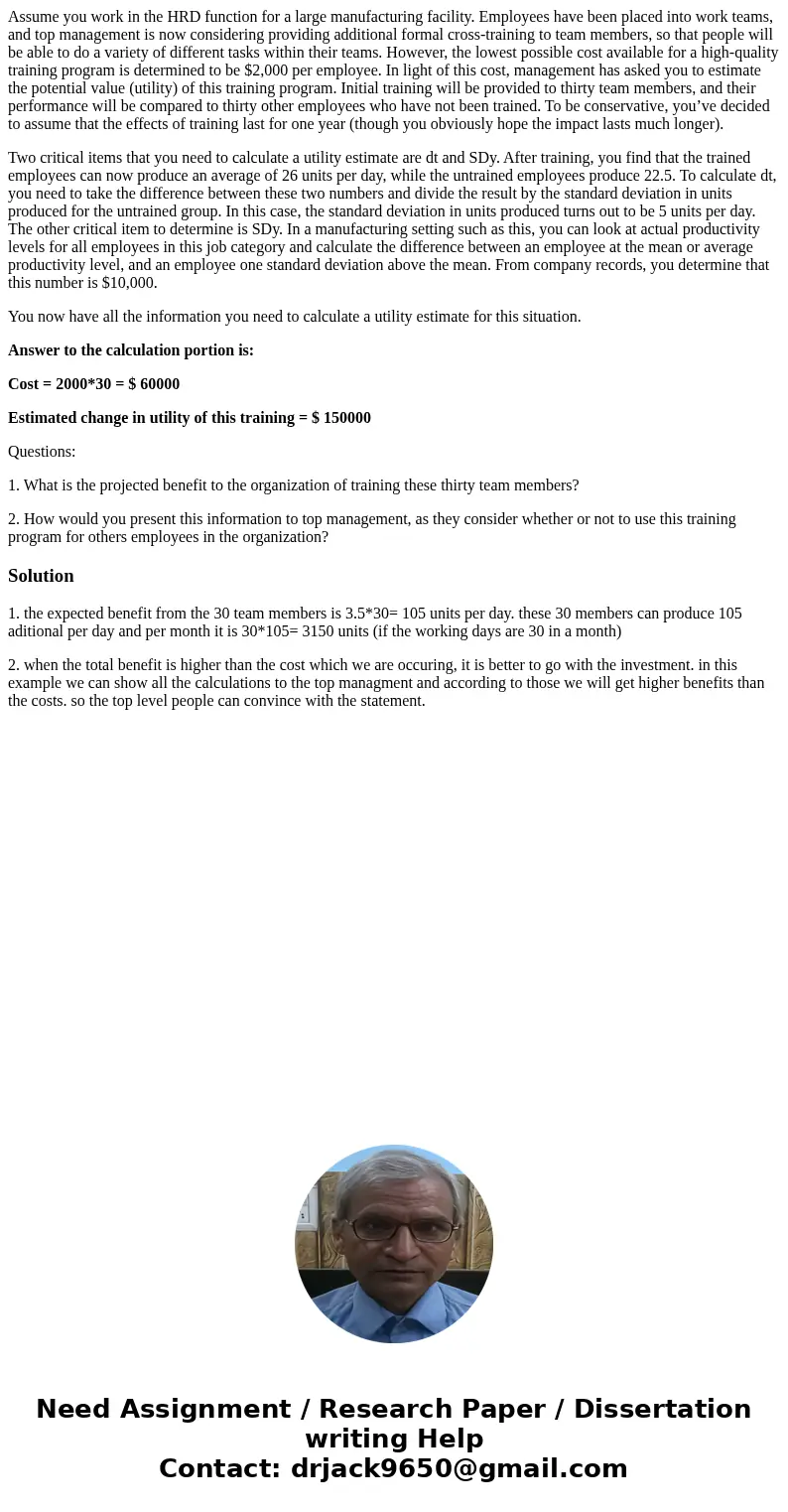Assume you work in the HRD function for a large manufacturin
Assume you work in the HRD function for a large manufacturing facility. Employees have been placed into work teams, and top management is now considering providing additional formal cross-training to team members, so that people will be able to do a variety of different tasks within their teams. However, the lowest possible cost available for a high-quality training program is determined to be $2,000 per employee. In light of this cost, management has asked you to estimate the potential value (utility) of this training program. Initial training will be provided to thirty team members, and their performance will be compared to thirty other employees who have not been trained. To be conservative, you’ve decided to assume that the effects of training last for one year (though you obviously hope the impact lasts much longer).
Two critical items that you need to calculate a utility estimate are dt and SDy. After training, you find that the trained employees can now produce an average of 26 units per day, while the untrained employees produce 22.5. To calculate dt, you need to take the difference between these two numbers and divide the result by the standard deviation in units produced for the untrained group. In this case, the standard deviation in units produced turns out to be 5 units per day. The other critical item to determine is SDy. In a manufacturing setting such as this, you can look at actual productivity levels for all employees in this job category and calculate the difference between an employee at the mean or average productivity level, and an employee one standard deviation above the mean. From company records, you determine that this number is $10,000.
You now have all the information you need to calculate a utility estimate for this situation.
Answer to the calculation portion is:
Cost = 2000*30 = $ 60000
Estimated change in utility of this training = $ 150000
Questions:
1. What is the projected benefit to the organization of training these thirty team members?
2. How would you present this information to top management, as they consider whether or not to use this training program for others employees in the organization?
Solution
1. the expected benefit from the 30 team members is 3.5*30= 105 units per day. these 30 members can produce 105 aditional per day and per month it is 30*105= 3150 units (if the working days are 30 in a month)
2. when the total benefit is higher than the cost which we are occuring, it is better to go with the investment. in this example we can show all the calculations to the top managment and according to those we will get higher benefits than the costs. so the top level people can convince with the statement.

 Homework Sourse
Homework Sourse